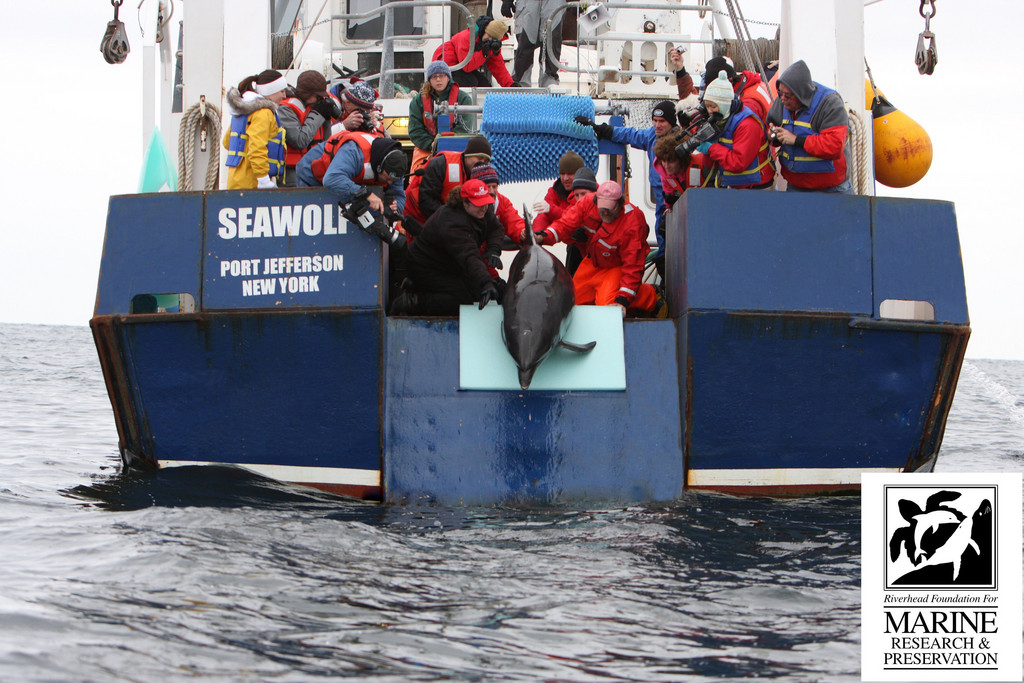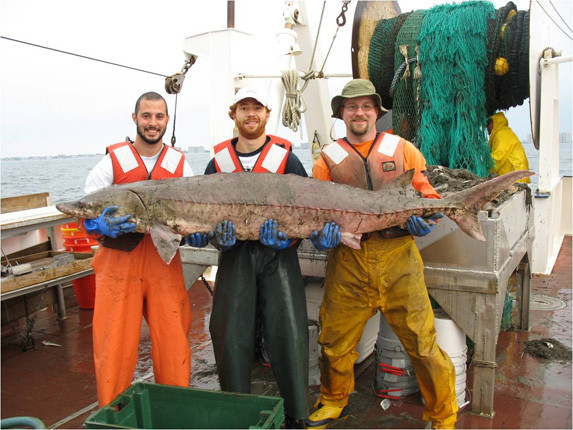There's something in the water, part III
A world awaits in the water: Marine life abounds off Long Island's South Shore
While many Long Islanders may think they need to dive deep in the ocean to find marine life, the truth is that they can see a wide variety of sea creatures in the waters closer to shore.
According to a survey conducted in 2004 by the Riverhead Foundation of Marine Research and Preservation, more than 1,150 different marine creatures visit the South Shore each year.
“There’s not a time of the year when you can’t see a marine mammal around the shores of Long Island, whether it is a seal, a whale or a dolphin,” said Robert DiGiovanni, the foundation’s director and senior biologist.
Baleen whales, which include humpback, right, fin and minke whales, are often spotted off Jones Inlet on the Jones Beach barrier island. The right whale, one of the most endangered whale species on the planet, can weigh 50 to 80 tons.
Long Island is part of the “normal migratory route ... for large whales to come up to the Gulf of Maine during the spring and in early summer,” said DiGiovanni.
In all, there are 80 species of cetaceans (whales, dolphins and porpoises) worldwide, and 12 of them can be found off Long Island’s shores, according to DiGiovanni,
The most common species, bottlenose, white-sided and Risso’s dolphins, as well as harbor porpoises, often hang around Long Island’s shores. In 2007, the Riverhead Foundation saved a bottlenose dolphin, which came to be named Seabreeze, in a channel in Bellmore, and released it back in the Shinnecock Inlet on the South Shore three months later.
The foundation placed a tracking device on the dolphin. Within a month of its release, Seabreeze swam to Newfoundland, in eastern Canada, and then came back down to Nova Scotia. The device enables the foundation to collect data on the dolphin’s travels.
In addition, there are seven species of sea turtles worldwide, and four can been seen in the waters off Long Island, said DiGiovanni. The Kemp’s Ridley sea turtle, one of the most endangered sea turtles, comes to Long Island regularly, as do loggerhead, green and leatherback sea turtles. The leatherback turtle is the largest sea turtle in the world, weighing up to 2,000 pounds when fully grown.
While harbor and gray seals come to Long Island regularly, people might be surprised to learn that Arctic species such as harp and hooded seals can be spotted around Long Island as well.
Long Island waters are also home to many species of fish, including the summer flounder and striped bass, and even tropical fish will sometimes migrate to the Island in the late summer and early fall.
According to Kim McKown, crustacean unit leader for the New York State Department of Environmental Conservation, tropical fish often get caught in the Gulf Stream and are dragged along the East Coast, ending up in Long Island waters. “It’s not that unusual to see,” said McKown, adding that Shinnecock Inlet is where tropical fish most often pop up.
While the species of tropical fish differ each year, McKown said that the butterfly fish, squirrelfish and the Southern sennet –– part of the barracuda family –– are examples of tropical fish that can be seen off Long Island.
Sturgeon have been around more than 200 million years –– since before the dinosaurs. These fish can grow to seven or eight feet long, and can often be seen leaping out of the water. Locally, sturgeon spawn in the Hudson River, and might be placed by the federal government on the Endangered Species List because of overfishing, according to
McKown.
Lined seahorses are also common in Long Island waters. They hang around seaweed and other plants close to the shore. Pipefish, relatives of the seahorse, do the same.
If you’re fortunate, at the end of May or early June, during a high tide and full moon, you can catch hundreds to thousands of horseshoe crabs spawning on beaches across Long Island, according to McKown.
The Riverhead Foundation is researching how global warming, the slow heating of the Earth caused by a buildup of greenhouse gases such as carbon dioxide and methane in the atmosphere, is affecting marine life. “If there are changes in our climate and water temperature, you’ll see those changes in what we see offshore,” DiGiovanni said. “It does vary from year to year. Those are things we are looking at right now to understand what those changes might mean for environmental factors.”
The Marine Mammal Protection Act of 1972 requires that people stay at least 50 yards away from marine mammals found in the oceans. It’s one of the many measures taken by the federal government to preserve marine life.
“We have these animals where most people are assuming that it’s rare,” said DiGiovanni. “It’s just rare that people see these animals, and that’s because nobody’s looking for them.”

 50.0°,
Overcast
50.0°,
Overcast 







